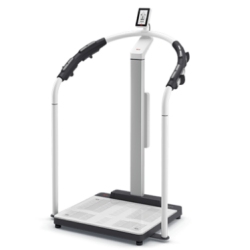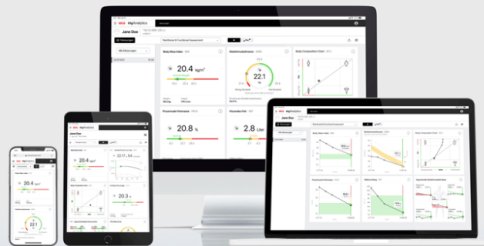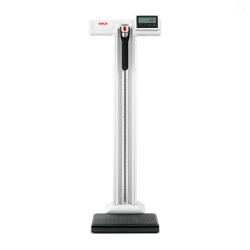Body fat scales are a popular tool for tracking body composition, but just how accurate is a body fat scale? These devices use bioelectrical impedance to estimate fat percentage, yet their accuracy can vary. This article examines how they work, the factors affecting their accuracy, and how they compare to other methods.
Important Points to Consider
-
Body fat scales use Bioelectrical Impedance Analysis (BIA) to estimate body fat percentage, but results are considered estimates rather than precise measurements.
-
Factors like hydration levels and foot positioning can significantly affect the accuracy of body fat readings, so consistency in measurement conditions is important.
-
While body fat scales offer convenience for tracking body composition at home, more accurate methods like DEXA scans exist, which provide a clearer picture of fat and lean mass distribution.
How Do Body Fat Scales Work?

Body fat scales utilize a technology called Bioelectrical Impedance Analysis (BIA). This method is used to estimate body composition. When you step onto a seca body fat scale, it sends a light electric current through your body. This process helps measure your body fat percentage. This current travels through different tissues at varying speeds due to their different water content. For instance, muscle and fat have different conductivity levels, which BIA can detect.
The scale measures the resistance faced by the electrical impulse. This occurs as it travels through your body. This resistance, known as impedance, helps calculate fat mass and fat-free mass. BIA assumes that 73% of the body’s fat-free mass is water, which is crucial for accurate calculations.
To improve accuracy, body fat scales take into account factors such as height, weight, age, and gender. These variables help the scale provide more personalized estimates of measuring body fat percentage. Additionally, body fat measurement scales often measure other metrics like muscle mass and water percentage, providing a more comprehensive view of your body composition.
While body fat scales work well for many people, it’s essential to understand that they provide estimates rather than exact measurements. They are validated for accuracy through comparisons with methods like whole-body MRI and the four-component model for fat-free mass. However, certain factors can still affect their readings, which we’ll explore next.
Factors Affecting Scale Accuracy
Hydration levels are one of the most significant factors that can influence the accuracy of body fat scales. Several other factors can also play a role in determining this accuracy. If you’re dehydrated, the scale might overestimate your body fat percentage. Conversely, overhydration can lead to an underestimation of body fat.
Another critical factor is foot position. Proper surface contact between your feet and the scale’s electrodes is necessary for reliable measurements. Incorrect foot positioning or leg flexion during the measurement can lead to inaccuracies. Accurate readings require correct foot placement and standing still during measurements.
Other factors like body temperature, humidity, and the quality of the scale itself can also affect accuracy. Higher body weight can exacerbate errors, and using the scale on a hard, flat surface can help avoid inaccuracies. Maintaining consistency in measurement conditions, such as the time of day and hydration levels, helps in obtaining reliable results.
Comparing Body Fat Scales to Other Methods

When it comes to measuring body composition, body fat scales are just one option among many. Dual-energy X-ray absorptiometry (DEXA) scans are often considered the gold standard because they measure fat, lean tissue, and bone with high accuracy. However, they can be expensive and not as accessible as body fat scales.
Other methods include hydrostatic weighing, which compares your weight on land to your underwater weight, and skinfold measurements, which use calipers to measure subcutaneous fat. Each method has its advantages and drawbacks. For instance, hydrostatic weighing is accurate but requires special equipment and can be uncomfortable. Skinfold measurements are more accessible but depend heavily on the user’s expertise.
Body fat scales offer the convenience of home use and the ability to track body composition trends over time. However, they may not differentiate well between fat and muscle, potentially leading to misleading results. Understanding the strengths and limitations of each method can help you choose the best approach for your needs.
Pros and Cons of Using Body Fat Scales

Body fat scales provide a mix of advantages and disadvantages. While they offer a convenient and user-friendly way to measure body composition at home, they also come with potential inaccuracies and limitations. Let’s look into these pros and cons in more detail.
Advantages
One of the primary advantages of body fat scales is their user-friendliness. They can be easily incorporated into daily routines, allowing users to monitor their body composition regularly without needing to visit a professional.
These scales also provide a convenient way to track changes in body fat percentage over time. Tracking trends instead of single readings helps users understand their progress and stay motivated towards their health and fitness goals.
Additionally, body fat scales enable users to track their fitness progress independently, without the need for professional assistance. This can be particularly empowering for individuals who prefer managing their health in their own home.
Disadvantages
Despite their advantages, body fat scales do have their downsides. The readings from these scales should be treated as rough estimates rather than absolute values. Various factors, such as hydration levels and foot positioning, can significantly affect the reliability of the readings.
Sudden fluctuations in body fat scale readings might not truly represent changes in body fat. This can result in confusion for individuals monitoring their progress. It’s essential to focus on long-term trends rather than short-term fluctuations.
Moreover, body fat scales do not account for important health metrics such as bone density, muscle mass, and visceral fat levels. While they can be useful for tracking general baseline measurements, they are not as precise as advanced testing methods.
Tips for Getting the Most Accurate Readings
To get the most accurate readings from your body fat scale, consistency is key. Using the same scale consistently and under similar conditions can help minimize discrepancies over time. Following the instruction manual ensures proper use of the device.
Proper positioning, surface contact, and keeping legs straight during measurements enhance accuracy. Ensure that your feet are correctly placed on the electrodes and that you stand still during the measurement process.
Using validated reference datasets that account for age, gender, ethnicity, and BMI can improve accuracy. These datasets help in quickly identifying weight-related health risks and provide more precise body composition readings.
Alternative Methods for Measuring Body Fat
In addition to body fat scales, various other methods exist for assessing body fat. These alternatives provide different ways to measure body composition. DEXA scans, for example, are highly accurate and measure fat, lean tissues, and bone. The Bod Pod, which assesses body fat by measuring an individual’s weight and volume, is another method.
The right method depends on accessibility, required precision, and personal preferences. Handheld bioelectrical impedance devices and skinfold measurements offer convenient options for those seeking simplicity.
The Role of Body Fat Percentage in Health
Body fat percentage is a critical indicator of overall health, often providing more insight than Body Mass Index (BMI). Unlike BMI, which does not differentiate between fat and lean body mass, body fat percentage gives a clearer picture of how much fat you carry relative to your total body weight.
Knowing your body fat percentage aids in assessing health risks like heart disease, diabetes, and other obesity-related conditions. An increase in body fat percentage over time should be discussed with your medical provider to assess potential health implications.
While indirect methods like bioelectrical impedance can have larger predictive errors compared to direct methods, they still play an important role in tracking body composition trends. Choosing the right measurement technique based on individual circumstances is essential for accurate health assessments.
Overall Summary
Body composition analyzers offer a convenient and user-friendly way to track body composition at home. While they provide valuable insights, it’s important to understand their limitations and the factors that can affect their accuracy. Comparing body fat scales with other methods can help you choose the best approach for your needs.
Ultimately, monitoring body fat percentage is crucial for assessing health risks and setting fitness goals. By making informed decisions and using the right measurement techniques, you can take control of your health and well-being.
Frequently Asked Questions
How do body fat scales work?
Body fat scales work by sending a small electric current through your body and measuring the resistance to estimate your body composition. It’s a quick and easy way to check your body fat levels.
What factors can affect the accuracy of body fat scales?
The accuracy of body fat scales can be influenced by factors like hydration levels, foot position, and the quality of the scale itself. Paying attention to these can help you get a more reliable reading!
How do body fat scales compare to other methods like DEXA scans?
Body fat scales are convenient for home use, but DEXA scans generally deliver a more accurate and detailed assessment of your body composition.
What are the main advantages of using body fat scales?
Using body fat scales makes it easy to monitor your body composition regularly from the comfort of your home, helping you stay on top of your health trends. They’re convenient and user-friendly, providing valuable insights into your fitness journey.
Are body fat scale readings always accurate?
Body fat scale readings should be seen as rough estimates. It’s better to focus on long-term trends rather than individual readings for a clearer picture of your body composition.
For information on our seca mBCA 554 Body Composition Scale and others please complete our RFQ form on our website.